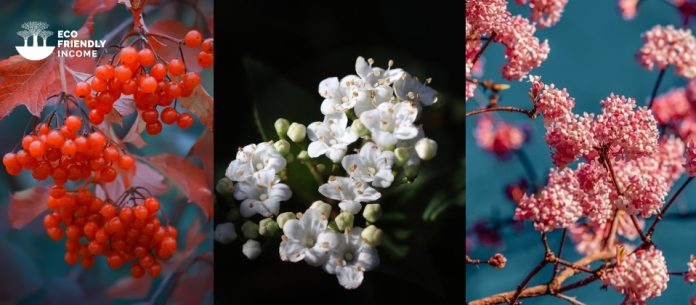If you’re looking to expand your garden or simply propagate your viburnum plants, you might consider multiplying them by rooting stem cuttings or sowing seeds.
Both methods are effective and relatively easy and can save you money compared to purchasing new plants.
In this article, we’ll take you through the step-by-step process of propagating viburnum using these two methods, so you can enjoy more of these lovely shrubs in your landscape.
Note: Please do not propagate invasive viburnum species.
If you live in North America, avoid these species at all costs. They escape your garden and damage our ecosystems.
Invasive Species:
| Linden viburnum (Viburnum dilatatum) | Japanese snowball (Viburnum plicatum) | Siebold Viburnum (Viburnum sieboldii) |
Prioritize our native species:
| Nannyberry (Viburnum lentago) | Highbush cranberry (Viburnum trilobum) | Downy arrowwood (Viburnum rafinesquianum) |
| Guelder Rose (Viburnum opulus) | Mooseberry (Viburnum edule) | Wild Raisin (Viburnum nudum) |
How to Propagate Viburnum by Cuttings
The best method to propagate viburnum is by taking plant cuttings, now when you do this, you have two options:
We’ll take a look at both methods:
Hardwood Cuttings
A great method to propagate elderberry is by taking hardwood cuttings. The best time to do that is late fall or early spring when the shrub is still dormant.
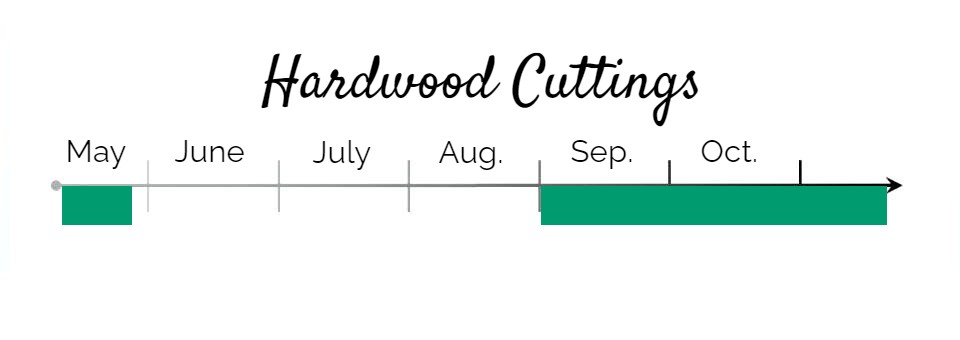
Very important: Choose a young, healthy plant to take cuttings from. Older shrubs are less vigorous and harder to root!
Step 1: Harvest the Cuttings
- Search for branches that have grown in the past 1-2 years.
- Cut the branch underneath a node, each at least 1/4″ to 1/2″ in width, and remove any branches that fork.
- Snip the branch into pieces that are 6-8 inches long and contain several pairs of nodes.
Step 2: Root the Cuttings
- Use a well-draining mix like peat moss with perlite, or just plain coarse sand.
- Next, use a dibbler to poke holes into your medium, then coat the tips of your cuttings in rooting hormone and slide them in (make sure they’re the right way up).
- Now place the cuttings in a spot with indirect sunlight.
- Keep the medium moist and well-ventilated to prevent rot.
- Let the viburnum cuttings root throughout the summer, you should have nice roots by fall.
- Finally, bring them in your greenhouse for winter or if they’re in planters, make sure they get covered by snow to insulate.
Now your cuttings will have been hardened, in the spring, they’re ready to be transplanted into pots.
Use a good compost mix, and fertilize with slow-release pellets.
Softwood Cuttings
You can also propagate viburnum by taking semi-hardwood cuttings. The best time to do that is from June until the end of August.
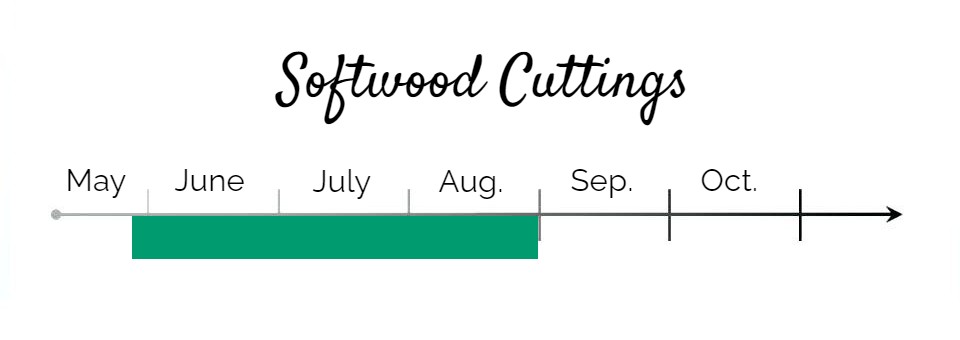
Follow the 6-week rule!
Wait at least 6 weeks after the first spring leaves emerge to harvest your cuttings. They’ll have hardened enough not to droop over when you cut them.
Recommended Rooting Medium: Coarse sand, or a mix of peat and perlite.
Step 1: Harvest the Cuttings
- First, find your viburnum bush and look for the current season’s growth.
- Next, snip a long branch off, just below where the stem turns from green to brown.
- In general, a good length for each semi-hardwood cutting is about 4-5 inches, but more importantly, make sure the wood is thick enough, 1/8-1/4 inch each is good.
- When you cut, you want to do it at an angle and below a node.
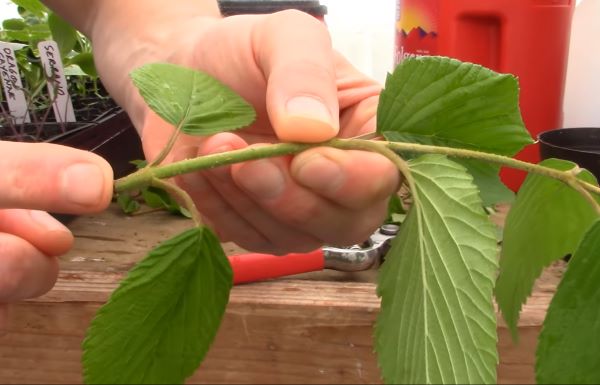
Step 2: Prep & Root
- Now remove all leaves except 1-2 at the top, and cut the leaves in half to prevent too much water from evaporating.
- Next, moisten the bottom tip of your cuttings, and dip them in rooting hormone (knock off excess powder).
- Prepare your rooting medium by poking holes with a dibbler, then insert your cuttings, and tamp the soil (Don’t compact the soil too much).
- Keep watering the cuttings to maintain humidity, and cover them with plastic if the humidity is too low. Make sure to ventilate periodically.
Let them root throughout the summer, they’ll only be ready for potting after they’re overwintered.
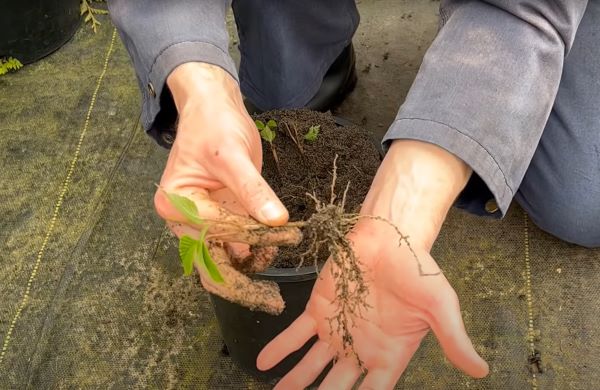
For winter, bring them into your greenhouse, or let them get covered by snow to keep them well insulated.
When spring comes around and they wake up, they’ll be ready for transplant.
Pot them up in a good compost mix, and fertilize them with slow-release pellets.
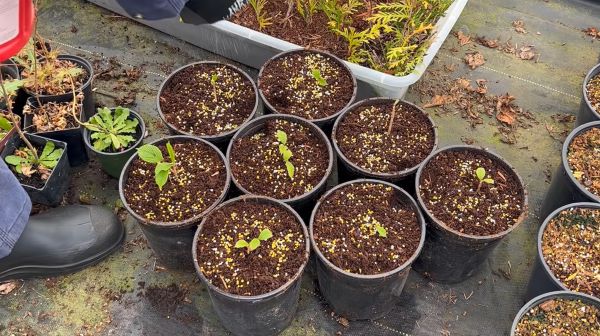
How to Propagate Viburnum by Seed
You can propagate viburnum by seed if you mimic its natural process, which means a warm-cold stratification is required.
If you harvest by hand, you should stratify differently than if you buy them online (the seeds might have already done their warm stratification).
If you can’t find them growing nearby, you can order seeds of many viburnum species online at Sheffields.
How to Harvest Seeds
The best time to harvest viburnum seeds is late summer to early fall.

Wait as long as possible if you can (this will shorten the warm part of stratification). Look for viburnum berries that have turned dark, this means they are fully ripe.
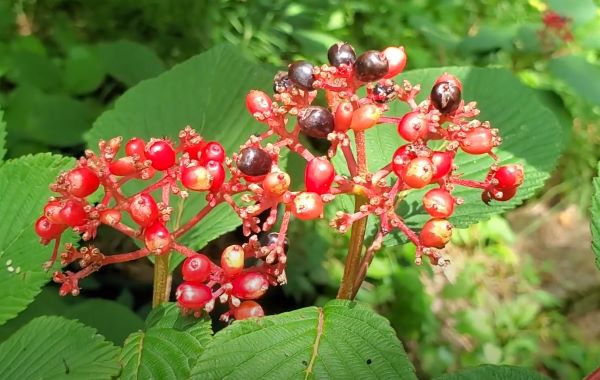
The fruits contain one seed each, there are a few options that work if you want to harvest them yourself.
Here are the 3 options you can try:
- Squish the fruits open, and harvest each seed one by one (there is one seed per fruit).
- Blend the fruits with a bit of water, remove the pulp, blend again, remove any remaining flesh, and strain the juice to collect the seeds.
- Freeze them inside the fresh fruits.
If you choose option 1 or 2:
Let the seeds air dry in a cool, well-ventilated place away from direct sunlight.
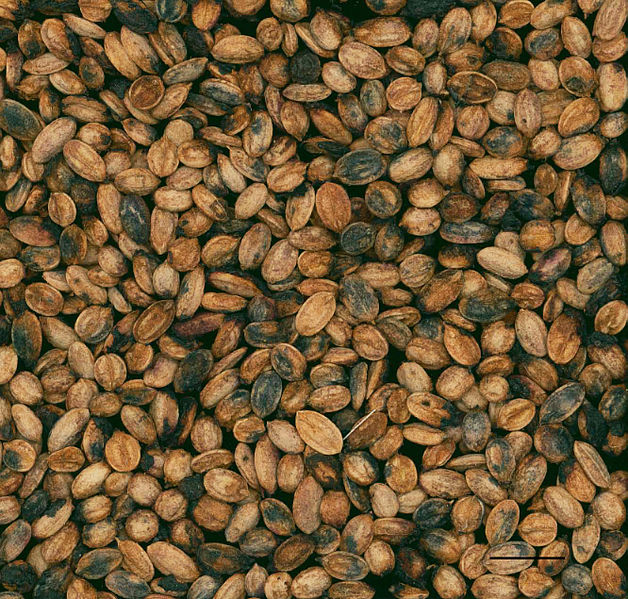
If you choose option 3:
Do this only if you know they’ve gotten their warm stratification period.
There is always a chance to harm the seeds if you freeze them, but there are reports of successful germination when frozen without even extracting the seeds.
Stratification
The next step for viburnum is to warm-cold stratify. In general, they need something like this: 120 days warm, 90 days cold.
Keep in mind the stratification will take the whole winter, which will get the seeds ready for next spring.
- Begin warm stratification: Store them at room temperature in a sealed container with moist sand, away from direct sunlight for 1-6 months. The duration you do this depends on how late you harvested them, the later you do, the less you have to warm stratify. Note: Some subspecies require longer warm stratification periods.
- Begin cold stratification: Transfer the seeds to your refrigerator for 60 days. Make sure it’s in a spot with less variance of temperature if you constantly open and close the door.
- Awaken the seeds: Now take your seeds out of the fridge, and place them into room temperature water for 12-24 hours to engorge them. After this, place them back into your refrigerator for another 30 days.
They might sporadically germinate inside the fridge, but after 30 days, you can finally sow them.
Ideal Soil to Sow Viburnum Seeds
Personally, I make my own seed-starting soil with regular cheap garden soil bags.
So how do you make that ideal soil for germination? It’s simple, take regular potting soil and sift it with a garden sieve.
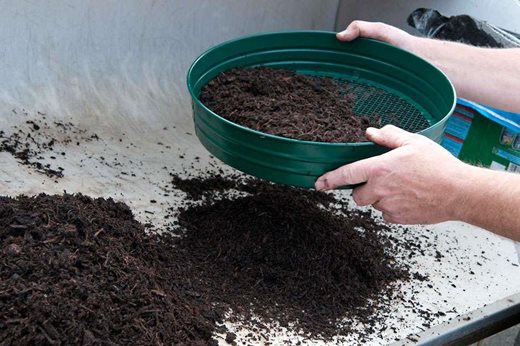
That will remove those wood chips and large particles that only get in the way when you germinate seeds.
It’ll give you a fluffy soil mix that aerates well.
Tip: Keep the wood chips and reuse them as mulch!
Sowing
After stratification is complete, sow your seeds under at least 1/4″ soil, and tamp the soil but don’t over-compact, let the seeds breathe as well.
If you over-compact, you really make it hard for the seeds to germinate and root efficiently.
Keep the soil moist, and mulch if you think the soil will dry too quickly.
Seeds should germinate within a few weeks. Some seeds may remain dormant until next spring.
Alternatively, you can try to sow the viburnum fruits in a propagation frame as soon as you harvest them. This way nature can do the work!
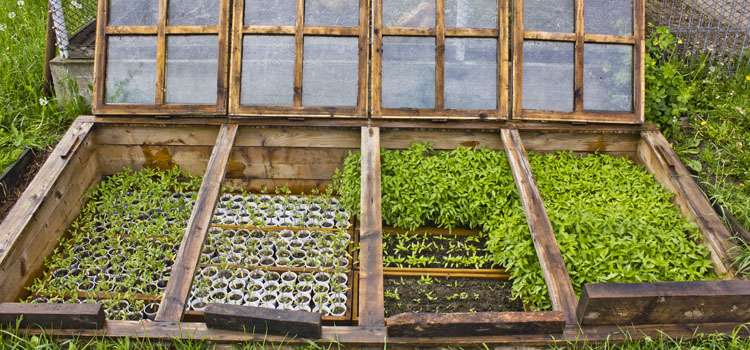
Good luck propagating your viburnums!
FAQ
A: You can, but it may not form very robust roots. We recommend you root in soil.
A: Yes of course, the most reliable technique for viburnum is with semi-hardwood cuttings.
A: Yes, but avoid taking cuttings when a plant is flowering. Best to do it before it flowers.
A: To germinate viburnum, you need to put the seeds through a long warm-cold stratification period. Usually from 120 days warm and 90 days cold.
A: Laurutinus (Viburnum tinus) is the fastest-growing viburnum at about 45cm per year.
A: Most cuttings from hardy plants will do just fine through winter unprotected, as long as they’re covered in snow. Under snow, the cuttings will be well insulated from wind burn.
A: We recommend you try these native, cold-hard viburnum species:
– Nannyberry (Viburnum lentago)
– Highbush cranberry (Viburnum trilobum)
– Downy arrowwood (Viburnum rafinesquianum)
– Guelder Rose (Viburnum opulus)
– Mooseberry (Viburnum edule)
– Wild Raisin (Viburnum nudum)

